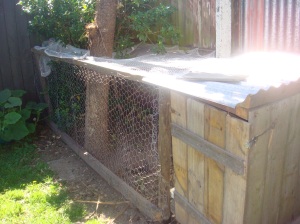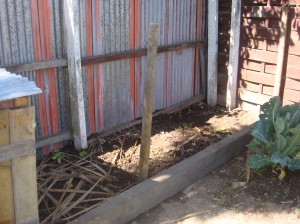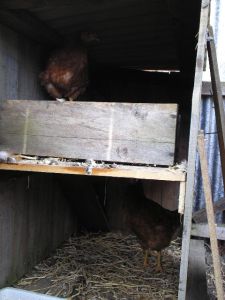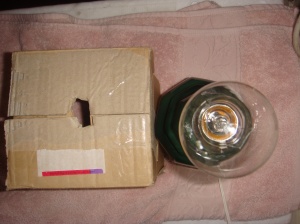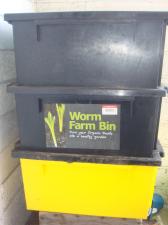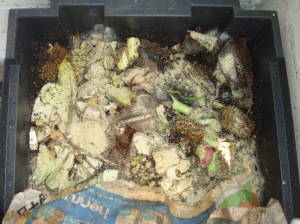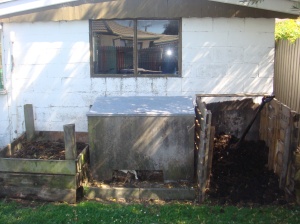Hatching eggs has lead me to a tricky situation. While I don't want to count my chickens before they hatch, I do want to be prepared for chicks if they do arrive. Like many other things, chicken coops sell for too much on trademe in my opinion. So I've decided to start building a chicken coop. Maybe if I get around to it I might be able to build a few extra to sell and lower the average price of coops on trademe.
So this is part one of my chicken coop building antics.
Here is my current chicken coop and run which houses my shaver hens.
Here is the area where I will make my second chicken run, you can see I've begun work by laying down a large beam of pine and a couple of round uprights. I'll attach some netting to the front of this and perhaps a door on the left so I can get in to clean and add water.
I plan to modify my existing coop which is big enough to house more than the current two chickens. In order to keep the chickens apart rather than disrupting the pecking order, I'll probably make it two story, and give the new arrivals the bottom floor. I made the mistake of allowing my first chickens to sleep where they lay, so they'll probably do that for the rest of their lives. I won't make the same mistake with the new chickens, who will have ample perching space.
Good luck if you're building a coop. The good thing about chickens is they're not at all fussy, you can house them just about anywhere. Buying an expensive coop may make you feel better, but they won't thank you for it!
I'll post part two shortly which will hopefully include pictures of the finished coop and run, modified for its future occupants. Hopefully you're inspired to build your own chicken coop now, rather than paying all your hard earned pennies to someone on trademe!

